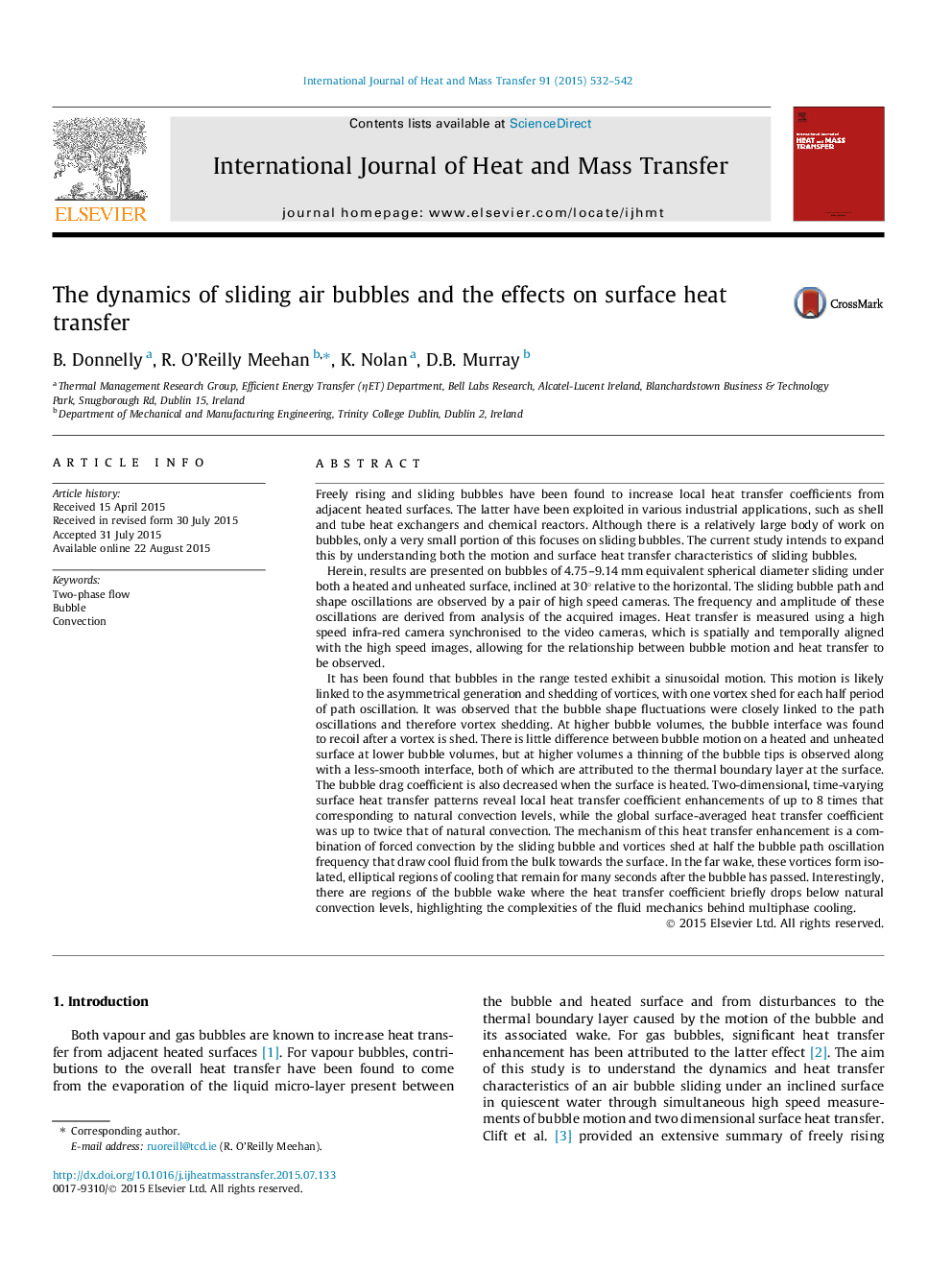| Article ID | Journal | Published Year | Pages | File Type |
|---|---|---|---|---|
| 7056258 | International Journal of Heat and Mass Transfer | 2015 | 11 Pages |
Abstract
It has been found that bubbles in the range tested exhibit a sinusoidal motion. This motion is likely linked to the asymmetrical generation and shedding of vortices, with one vortex shed for each half period of path oscillation. It was observed that the bubble shape fluctuations were closely linked to the path oscillations and therefore vortex shedding. At higher bubble volumes, the bubble interface was found to recoil after a vortex is shed. There is little difference between bubble motion on a heated and unheated surface at lower bubble volumes, but at higher volumes a thinning of the bubble tips is observed along with a less-smooth interface, both of which are attributed to the thermal boundary layer at the surface. The bubble drag coefficient is also decreased when the surface is heated. Two-dimensional, time-varying surface heat transfer patterns reveal local heat transfer coefficient enhancements of up to 8 times that corresponding to natural convection levels, while the global surface-averaged heat transfer coefficient was up to twice that of natural convection. The mechanism of this heat transfer enhancement is a combination of forced convection by the sliding bubble and vortices shed at half the bubble path oscillation frequency that draw cool fluid from the bulk towards the surface. In the far wake, these vortices form isolated, elliptical regions of cooling that remain for many seconds after the bubble has passed. Interestingly, there are regions of the bubble wake where the heat transfer coefficient briefly drops below natural convection levels, highlighting the complexities of the fluid mechanics behind multiphase cooling.
Keywords
Related Topics
Physical Sciences and Engineering
Chemical Engineering
Fluid Flow and Transfer Processes
Authors
B. Donnelly, R. O'Reilly Meehan, K. Nolan, D.B. Murray,
